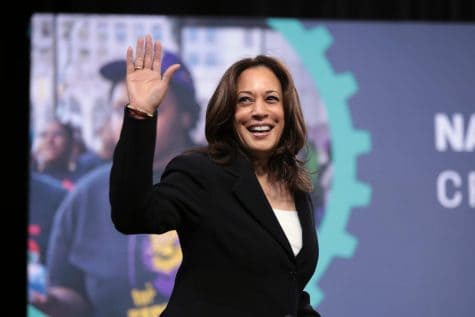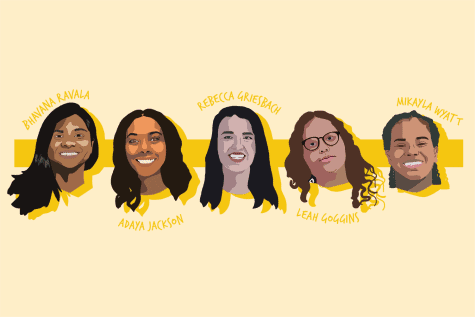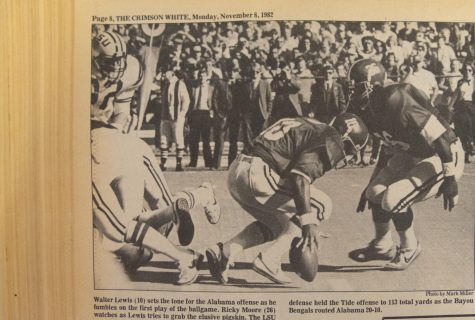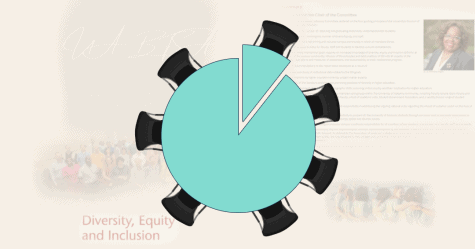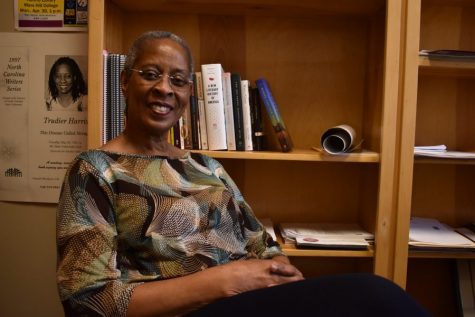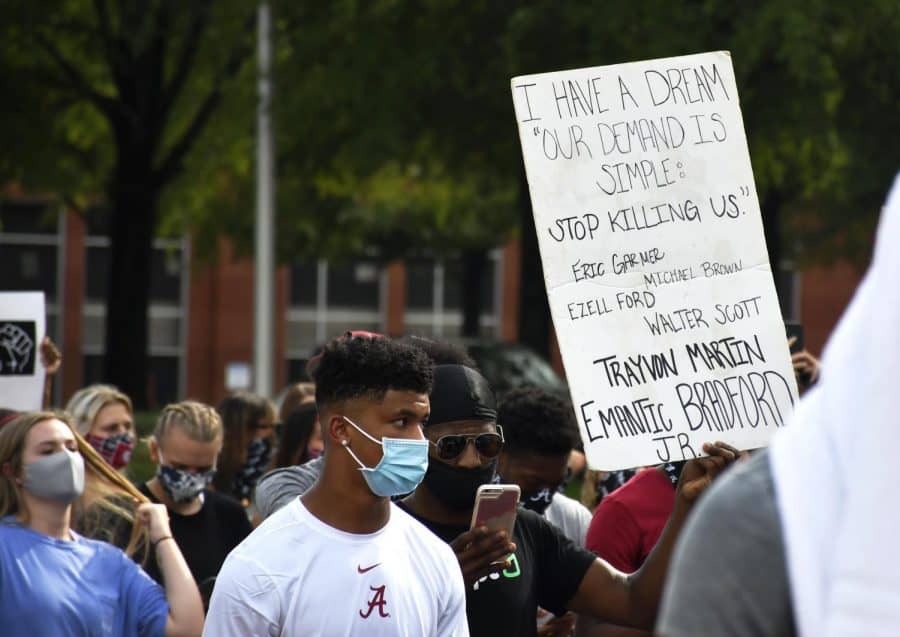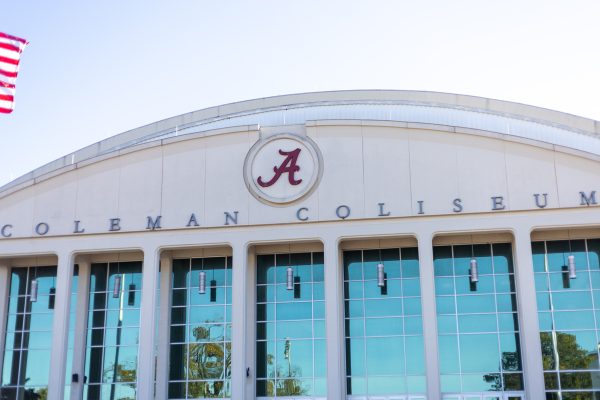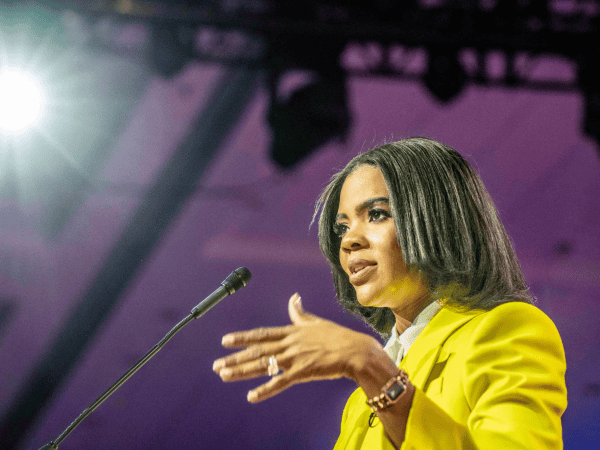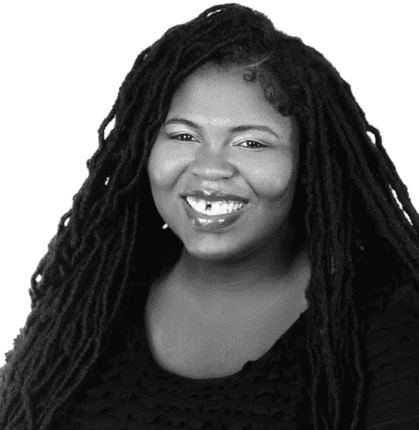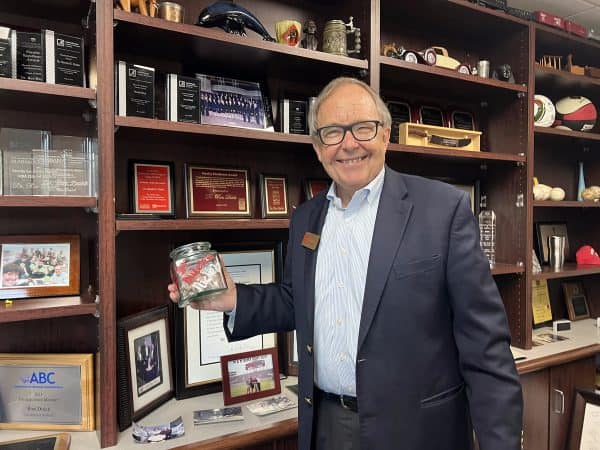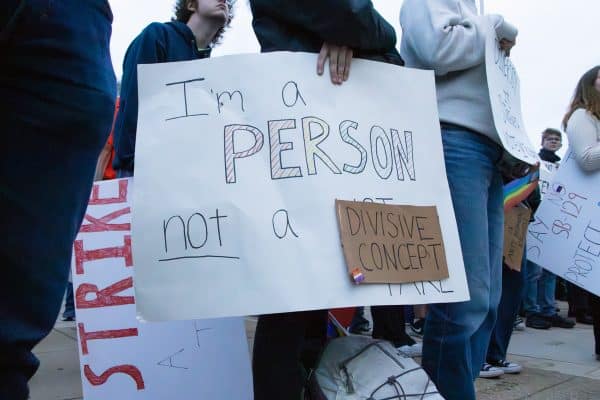Opinion | Now what? Student athletes’ calls to action go largely unanswered
Promises were made. Have they been kept?
The summer of 2020 was filled with racial turmoil and renewed cries for sustained social reform. People around the country focused on creating platforms for Black people to be treated justly. In August, the fight for change made a stop at the Capstone. Former University of Alabama running back Najee Harris posted on his Twitter account that athletes and students would be marching for change. The march took place. Players, coaches and faculty spoke. Some even cried.
But did the pursuit of change at the University start and end on that day?
The main message of the athletes’ march in August was to be a catalyst for change at the University and Tuscaloosa. In a press conference after the march, Alabama football coach Nick Saban discussed the importance of having a mission like this.
“It’s always been our mission as coaches, and one of the reasons that I love college coaching is to try to elevate the opportunities the players have in our program, to have a better chance to be more successful in life because they were involved in the program,” Saban said. “But [we] also [want them to] use those experiences so that they can actually inspire and elevate other folks so that they have a better chance to be successful as well. That’s something I’m very proud of our players for having done.”
Having a social justice march at the University seemed like a great first step in change finally coming to the Capstone, something current and former students have pushed for. But protesting is not the last step to real change. Taking on something as vast as social justice reform requires hard work and dedication. Can the calls to action from that August day carry to today?
Since that August demonstration, the University has partnered with the Southeastern Conference (SEC) to participate in a voter education and participation program. The program was implemented in September 2020 to facilitate higher voter turnout from athletes attending the 14 member schools. After the announcement of this program, SEC commissioner Greg Sankey issued a statement on the purpose of this program.
“Voting is an important way to fulfill one’s civic duty in America,” Sankey said. “The SEC Voter Education and Participation Program focuses on creating an opportunity for our universities to help our student-athletes, coaches and staff understand and participate in the election process.”
When the program was first announced, it seemed like an excellent opportunity to increase athletic engagement in local, state and national voting.
But few things have come out about the progress of this program.
No pictures, no announcements and no updates. The end of the initial statement the SEC released said that local and Conference-wide activities would be soon added to the foundation this program laid.
But what exactly is the foundation this program is being built on?
In a press conference last fall, Alabama tight end Miller Forristall said that the team started to have discussions about voter registration.
“We’ve started to kind of push players, we’re trying to get everyone to vote, as they should,” Forristall said. “We’ll continue to work on that as we get closer to November, and kind of talk and see what we’re going to do about it. I’m sure at some point we’re going to talk about it. We’ve talked about a little. Maybe reach out and raise awareness, go from there. We’re by no means sure what we’re going to do. But we’ve talked about it a little bit.”
From the outside looking in, it seems like the foundation is talking about change. However, the silence from the University’s athletic department suggests that little to no actions have been made to supplement the athlete’s words. The promises made on that day by the athletes, the UA athletic department and the SEC represent the change called on by the leaders of the player’s march. Are they able to fully lead the charge?
During the summer, it seemed like Alabama Athletics were letting students voice their opinions. It started with the “All Lives Can’t Matter Until Black Lives Matter” video done by the football team and narrated by former offensive lineman Alex Leatherwood after George Floyd’s death.
Then, the athletes held a march. Where do the athletes and their mission go from here? The University of Alabama Office of Diversity, Equity and Inclusion (DEI) says it’s working closely with the athletic department to promote the following:
- Develop a culture of inclusion within athletics
- Recruit and retain diverse and culturally competent staff members
- Encourage respectful dialogue between people with different experiences, beliefs and perspectives
- Partner with campus departments and the Tuscaloosa community to educate and celebrate diversity
- Foster a learning and working environment that maximizes the diversity of student-athletes and staff, through the development of cultural competencies, free of stereotypes and bias
- Advance and foster diversity and inclusion by providing programming and education that supports individuals on the basis of race, color, gender, religion, age, pregnancy, national origin (including ancestry), disability, veteran status, sexual orientation, gender expression, gender identity, marital status and all other protected statuses.
G. Christine Taylor, UA vice president for DEI, is the chair of an advisory committee that designed the “Path Forward” plan, which focuses on future issues related to DEI. According to Taylor, internal reflection is key to open eyes into the future and current problems that plague the University and the United States at large.
“Ongoing institutional reflection is imperative to ensure that we are doing all that we can to prepare our students for an increasingly diverse and global society,” Taylor said, noting that reflection must lead to action. “Many scholars describe this work as dynamic, impacted by shifts in demography, the emergence of new best practices, changes in laws and policies and increased attention to historically underrepresented and underserved populations.”
Stating that the University strives to create diverse cultures within the athletics programs is great. What exactly does “a culture of inclusion” look like? Are the students voices and experiences the driving factors in creating these cultures? How is the term “inclusion” being defined?
It seems like no one has the answer to these questions.
In order to create an inclusive culture from current and future athletes, transparency must be a priority. People across the country saw everyone coming together for a march. People saw the tears athletes shed and heard the emotion they poured out.
No one has seen those tears and emotions fuel actions.
The current calls to action from the athletic department have gone unchecked so far by its own university.
Those calls cannot stay on voicemail any longer. Change must come and it must be swift.

